Top 15 Creative Collaboration Software Tools & Platforms
Explore
Jan 20, 2023
Updated Jan 20, 2023
Collaboration is a key element of any design-related project, and it can also be the sole reason for a project’s downfall. Finding a correct creative collaboration solution can be a tough task, since the market is vast and extensive, offering all kinds of solutions in the field. In this article we attempt to showcase 15 different creative collaboration platforms with different use cases, highlighting their collaborative capabilities and their pricing models.
Collaboration and creative projects
Creative projects thrive in a collaborative environment. It is a large part of a project being successful, most of the time. At the same time, the number of people participating in a single project can vary quite a lot, and managing proper communication between each and every participant of a project can be extremely problematic – exchanging opinions, feedback, and even communicating about deadlines can be difficult if there is no proper way to communicate to one another.
Creative collaboration platforms are supposed to be the main solution for this problem – offering easy collaboration and seamless communication between all of the project’s participants, improving the chances of a project being a successful one. However, the market of creative collaboration platforms is relatively large, since it includes a variety of different solutions – from feedback management to video chatting.
This is why we are going to present 15 examples of different creative collaboration tools. In this list, we will attempt to cover as many different variations of creative collaboration software as possible, focusing more on each solution’s collaborative features and pricing schemes.
15 examples of creative collaboration platforms
Canva
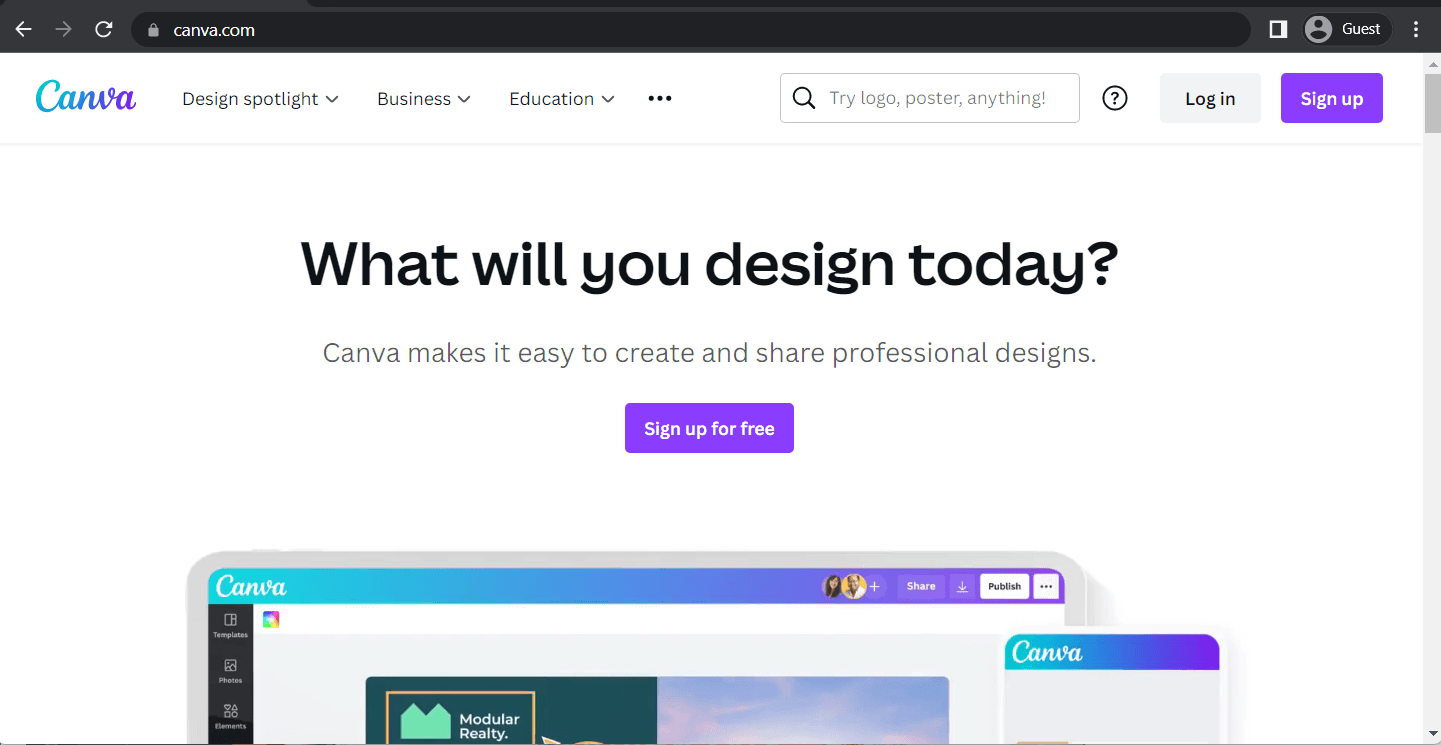
Canva is one of the more famous solutions in the field of online design tools with a large emphasis on collaboration and sharing. It has a variety of templates and other capabilities that let it work with many different art types, but Canva truly shines when creating print designs – especially in a collaborative environment.
Canva offers the “insights” function that allows for team progress tracking in real-time. It also has the ability to leave feedback with either reactions or regular comments, and you can also allocate tasks to different team members, share designs, invite more people to the team, and more.
It is distributed with a so-called “freemium” model, where the basic version of Canva is free of charge for everyone but has limited functionality. There are also two types of premium subscriptions – for individuals and for teams of people. The Canva Pro version has a fixed price cap of $54.99 per person per year, while Canva for Teams offers a subscription for up to five people at once per year for $84.90.
Figma
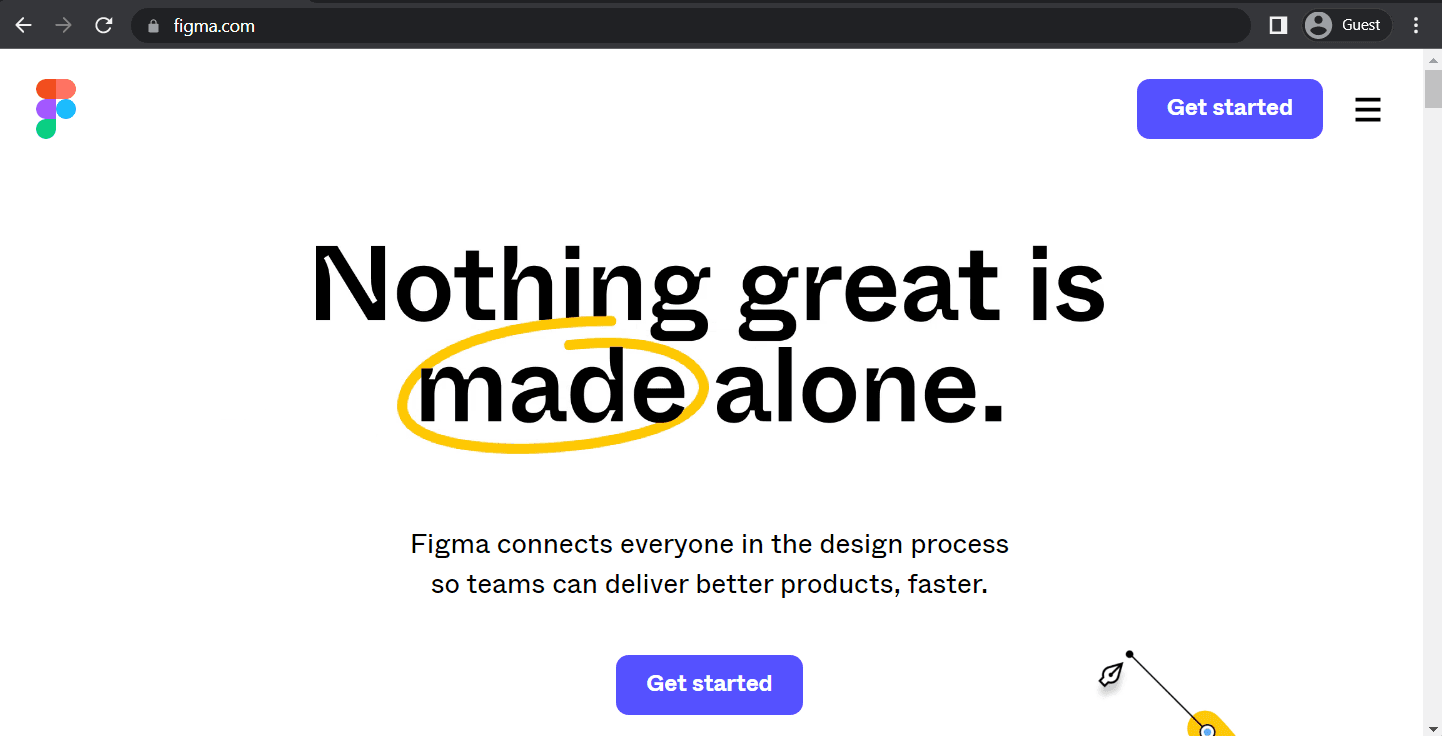
Figma is a web-based graphics design solution that managed to gather quite a lot of popularity in recent years. It has a lot of versatility in terms of what can be created with it – from social media posts and advertisements to design prototypes, mobile interfaces, and even website designs.
It also works great as a collaborative environment, with the ability to post in-context comments, as well as versioning, tagging, and the ability to collaborate from almost any device due to the solution itself being web-based.
Figma uses a pricing model similar to what Canva does – a basic free version of the solution with the ability to get an extended version for a subscription fee. There are two “premium” versions of Figma – Professional and Organization. The professional version has a price of $12 per person per month, with the capability to be billed either annually or on a monthly basis (the price changes to $15 per month if a monthly payment model is chosen) – offering zero limitations in terms of project numbers, version history, as well as project sharing, team libraries, etc. Figma Organization, on the other hand, is a $45 per person per month subscription with the only option being the annual payment model – it offers everything from the previous tier while also having extensive analytics, centralized file management, organization-wide libraries, and so on.
FigJam
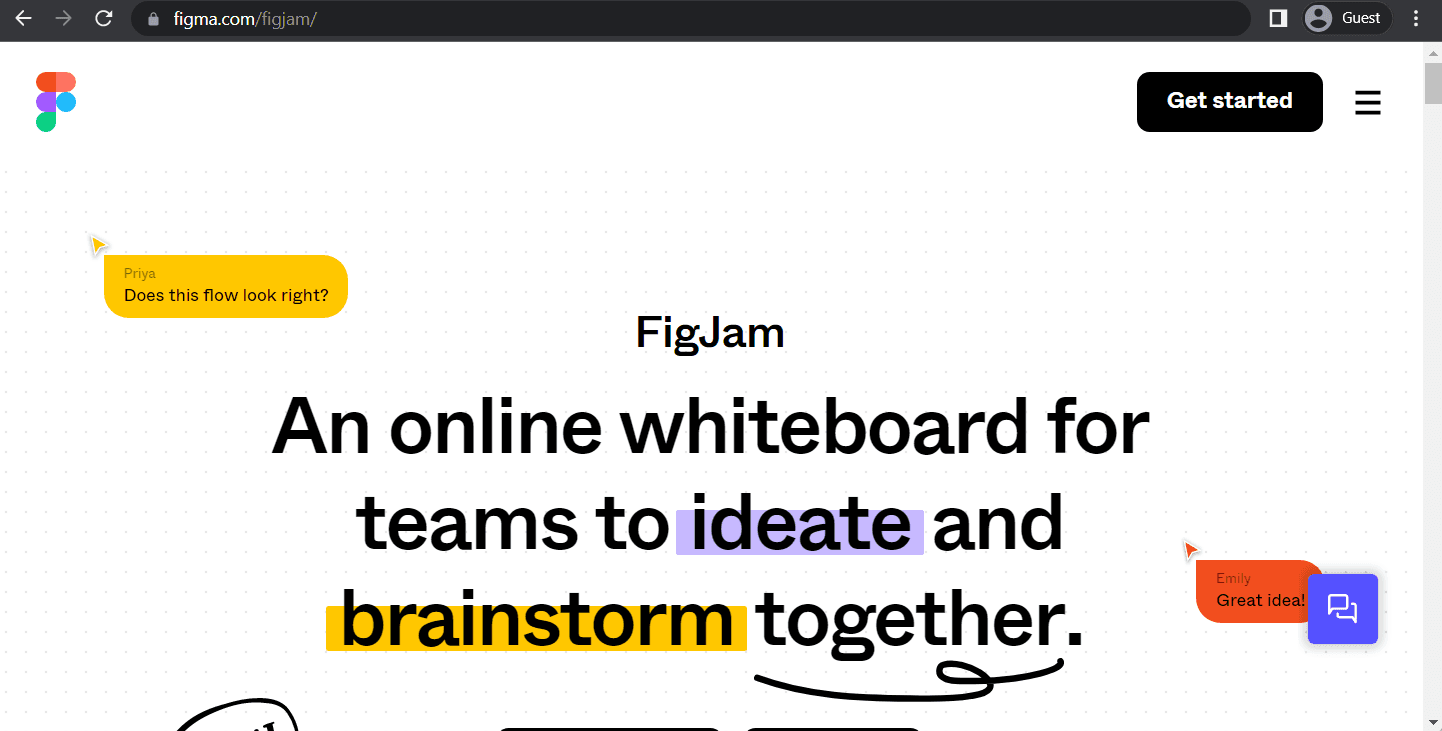
It would be safe to say that FigJam could be an extension of Figma’s capabilities – and it can be considered as such since it was created by the same company. And yet, it has enough unique features for it to be able to stand on its own feet as a standalone product with Figma integration capabilities. It is a great online whiteboarding tool that is a great way to generate and flesh out ideas in a collaborative environment.
Aside from the fact that FigJam’s integration with Figma is as seamless as it gets, there are also many other collaborative capabilities that FigJam has – mainly revolving around commenting in some way, be it with expressions, sketches, sticky notes, or even audio files.
FigJam also works on a “freemium” model with a free basic version of the software in addition to a premium version with an extended feature set. FigJam Professional is at $3 per person per month billed either annually or monthly ($5 per month if a monthly model is chosen), offering audio conversations, no limits on the amount of FigJam files, voting, open sessions, etc. FigJam Organization is $5 per person per month with annual billing, offering everything above and also centralized content management, unified administration, private widgets and plugins, and more.
Typeform
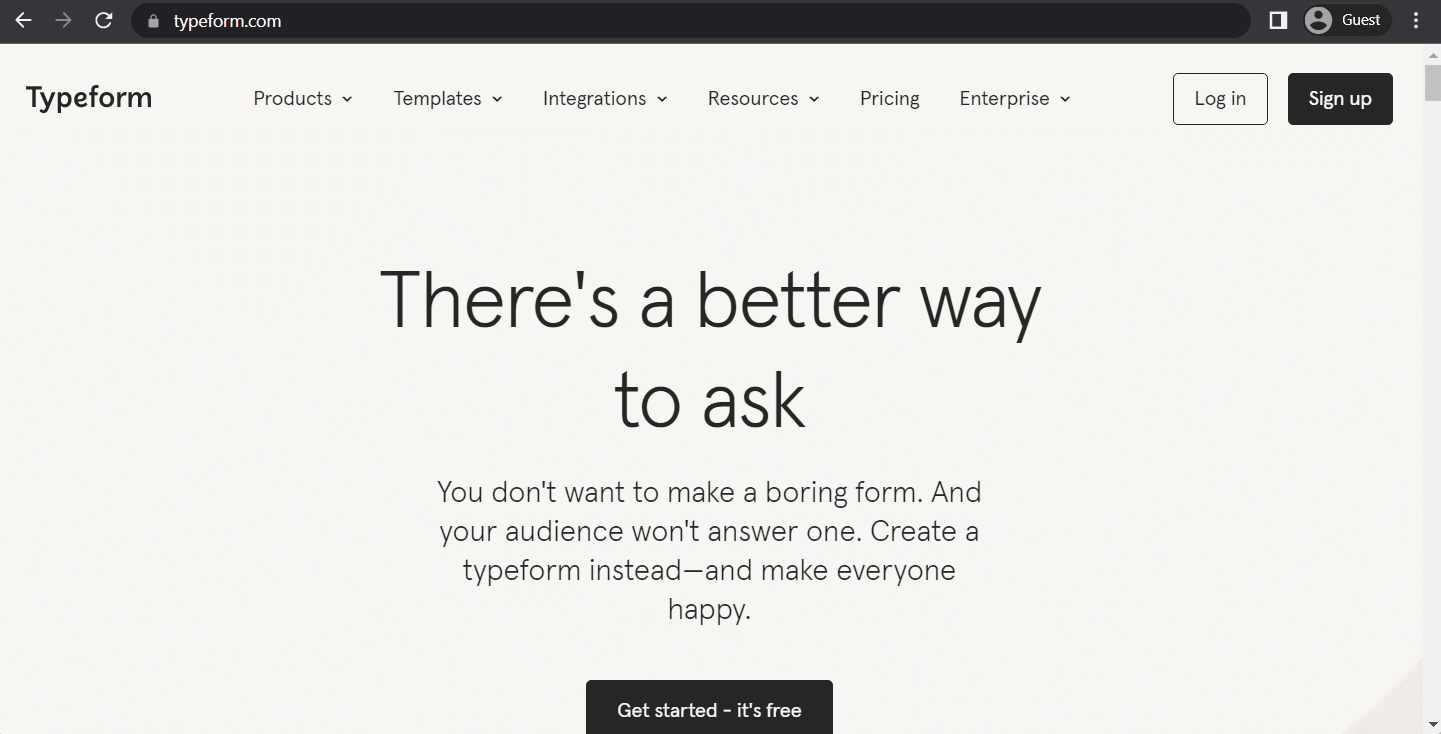
While there are many solutions in the creative space that offer collaboration features, Typeform is a solution that has collaboration as its primary purpose in the first place. It is an online survey solution that can be used for a multitude of use cases – getting feedback about a specific design, gathering data for an infographic, etc.
Typeform can be used to create polls, surveys, quizzes, and forms, with the ability to integrate with different platforms to collect data for analysis purposes. It also has the capability to incorporate various types of media to make the questions themselves more varied and special-looking, generating more valuable feedback that way.
It is true that Typeform has a free version of its solution, as limited in capabilities as it is. The actual spectrum of what this creative collaboration tool can do can only be achieved with one of its paid subscription models – Basic, Plus, and Business. Provided at $25/50/83 per month respectively, and with the only ability for billing being on an annual basis, these “premium” plans offer a multitude of advantages to its users – including different limitations in terms of responses and different user counts. There are also features that are specific to the highest subscription tiers, such as Salesforce integration and advanced embedding options, which are only available for Typeform Business subscription users.
Invision

Invision is another versatile online whiteboarding platform that acts as a great creative collaboration app. It is extremely useful when it comes to managing various design processes, offering the ability to centralize your entire workflow for a boost in productivity and an improved collaboration experience.
Speaking of collaboration – it is more or less the primary purpose of Invision as a whiteboard platform. It offers vast collaboration capabilities, with over a hundred different templates, a multitude of integrations with other services, and more.
Invision has a free version that has the basic whiteboard functionality, but the brunt of interesting features is hidden behind a subscription paywall. There are two paid versions of Invision – Pro, and Business, with the former costing as much as $4 per user per month if billed annually ($4.95 if billed monthly), and the latter not having a public cost in the first place. The Pro version of this creative collaboration software is mostly an extension of a free version with no limitations – offering more active users, no limit on how many “freehands” you can create, and so on. The Business version, on the other hand, has its own set of unique features that other subscription versions do not have, including enhanced team security, priority support, specialized administrator roles, multi-factor authentication capability, and much more.
Notion
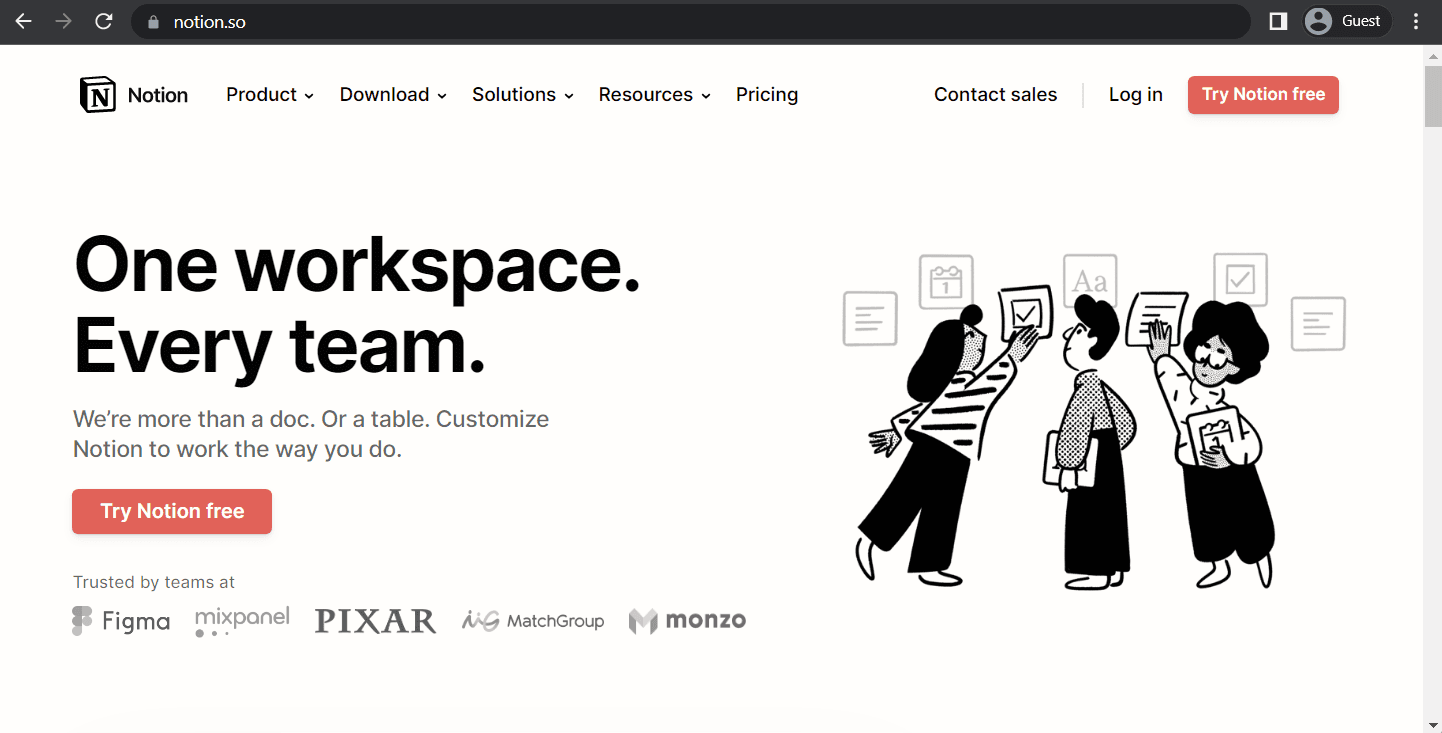
Notion is another interesting take on a creative collaboration solution, offering a “Wiki-style” tool that can be used in many different ways. In the context of design projects, it is a great way to centralize your and your team’s efforts in terms of gathering references – links to different websites and other resources that you can organize within different pages for your own convenience.
Notion can be used to collectively customize your pages and documents within the solution, it has a variety of templates for all kinds of situations, can integrate with a large number of resources and applications, and so on.
Similar to how most of the previously mentioned creative collaboration tools operate, Notion has a basic free version with a limited toolset, as well as several paid subscriptions that extend the functionality of the software to a certain degree. Unlike many solutions, Notion’s limitations in terms of its free software mostly concern its collaborative capabilities, meaning that it is basically a completely free solution for individuals. Teams and companies, on the other hand, have three versions to choose from – Notion Plus ($8/$10 per user per month), Notion Business ($15/$18 per user per month), and Notion Enterprise (no public price available).
Each version has its own set of definitive features that it can offer (as well as all of the benefits of the previous subscription tiers), with the Plus version being limitless in terms of the number of blocks or the file upload amounts. The Business version, on the other hand, has bulk PDF export, advanced analytics, and private teamspaces, while the Enterprise version also has audit logging, custom guest limits, advanced security options, and so on.
Miro

Miro might be one of the most popular whiteboarding/brainstorming platforms in the field, offering a versatile creative collaboration platform that can be used for various collaborative purposes from almost anywhere in the entire world. It has a variety of tools and templates that can be used to sketch or create a myriad of different unique designs for all kinds of creative projects.
Miro is a collaborative application from start to finish, offering a centralized platform for different team members to share their ideas, comment on existing ones, and interact with each other in many different ways. Miro has a multitude of different options when it comes to expressing yourself – be it videos, images, mind maps, sticky notes, and many other examples. It also boasts integration capabilities with a multitude of applications, including Trello, Zoom, Slack, Google Drive, etc.
Miro is a rather scalable solution, offering four different tiers of subscription to its users. The lowest existing tier is the free one, it does not have any payments attached to it, and works great for trying the app in question to see if it works for your team or company. Other tiers are Starter, Business, and Enterprise – with the Starter tier ($8 per person per month, only annual billing) being an extended version of the free tier, offering no limitations in terms of board amount, as well as custom templates, versioning, unlimited project folders, private boards, etc.
The Business tier ($16 per person per month, billed annually) offers even more useful features to its users, such as SSO, Miro Smart Meetings, advanced diagramming shapes, and more. The Enterprise tier does not have public pricing available (and only starts from 50 users and higher), but what it has is a list of features exclusive to this subscription level – automated license management, centralized account management, prioritized 24/7 customer support, enterprise-grade security, etc.
Asana
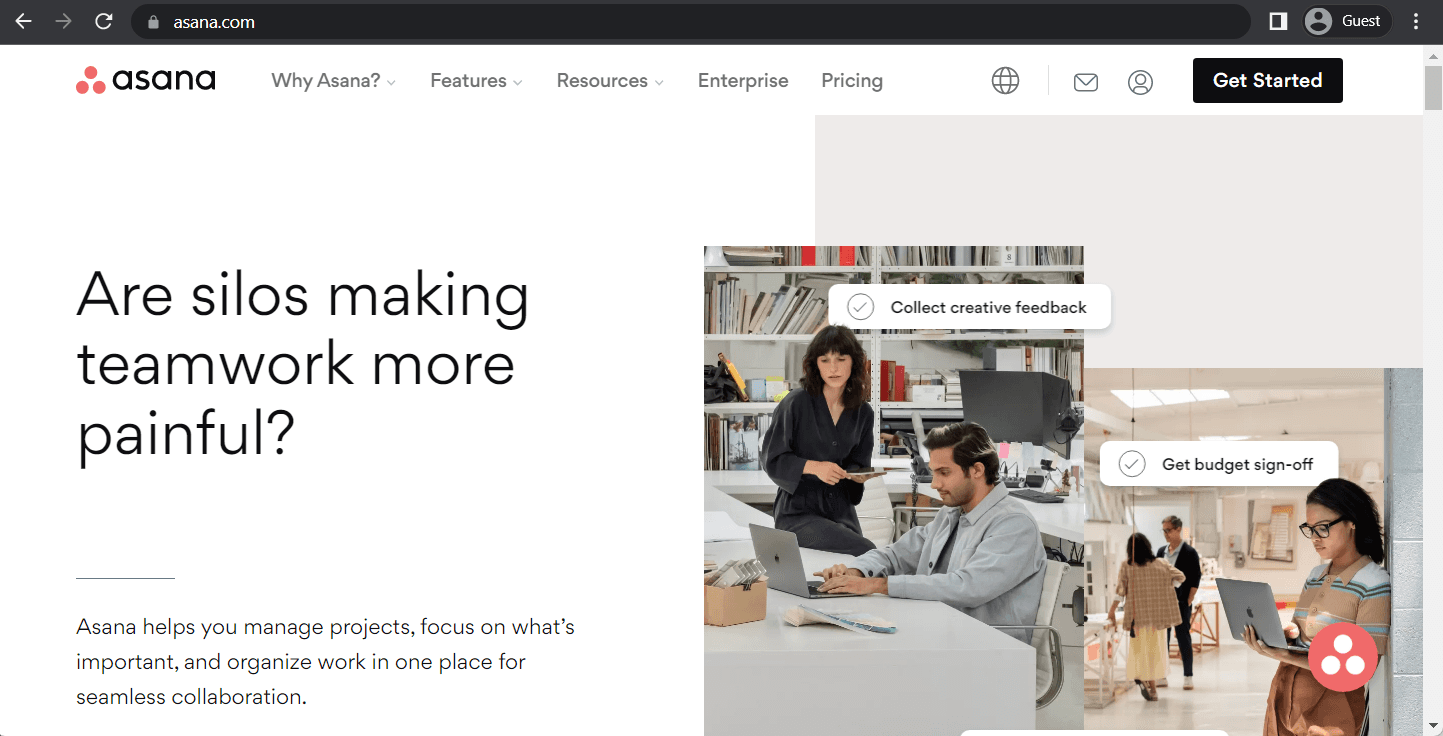
Asana is slightly different from all of the previously mentioned creative collaboration tools. This one is all about project management, with an added creative twist to it. Asana is a great tool for workflow management, task tracking, as well as general work organization operations. It can be used to create rules, and generate forms, and there are also hundreds of possible integrations with different applications, from Dropbox and Google Calendar to Zoom and Microsoft Teams.
Asana has a free Basic version of its solution that has near-unlimited functionality suitable for small teams of up to 15 people – with app integrations, mobile applications, time tracking, no limitations in terms of tasks/messages/projects, and so on. The next version is Premium, which is $10.99 per person per month if paid annually ($13.49 if paid on a monthly basis) – offering additional features in the form of advanced search capabilities, as well as timeline, task templates, forms, rules, custom fields, admin console, and more. The most expensive subscription level here is Asana Business, with a monthly payment of $24.99 per user per month if paid for annually ($30.49 if monthly), which offers features such as goals, portfolio, workloads, proofing, approvals, and so on.
GoVisually
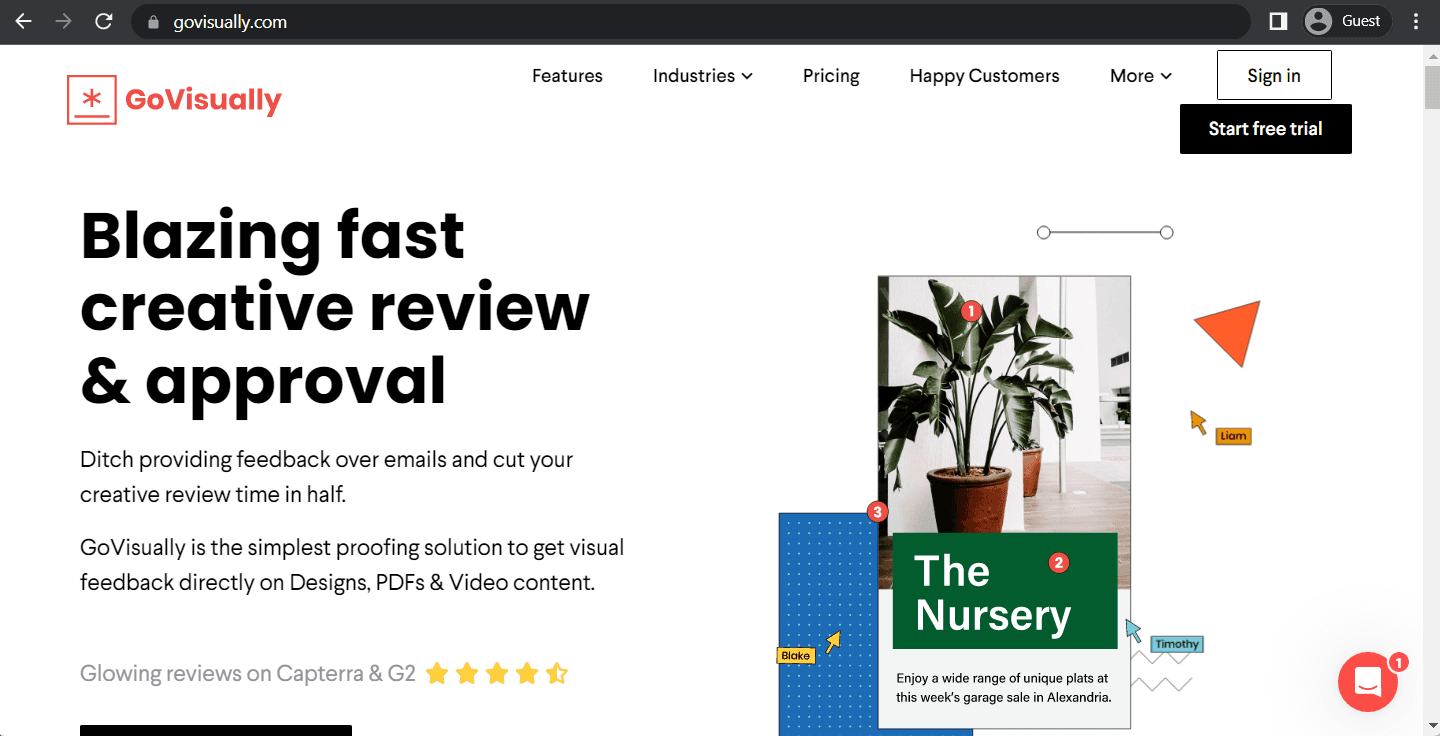
GoVisually is a great solution for reviewing and commenting on various creative projects, offering the ability to create comments or annotations about any part of the project in question. It is a useful way to collaborate on projects online, which is a lot faster and less painful than using more traditional methods such as email chains. There are several different forms of annotations available, as well as other features for commenting – and GoVisually can also show comments from only one specific person, making the review process that much easier to work with.
GoVisually as a solution does not have a free version – but it does have a free trial for both of its plans. As for the plans themselves – there is a Solo plan and a Team plan, with $20 and $50 being their respective price tags (with the price being about 20% higher if the subscription is paid for on a monthly basis instead of an annual payment). The Solo plan is a great option for regular users or freelancers, with an upper limit of 10 projects, email support, an unlimited number of reviewers that can be invited, and so on. The Team plan, on the other hand, can work for up to 5 users at once (with the capability to extend this upper limit), while also offering up to 1000 projects, video file upload support, the capability to set deadlines, 24/7 chat support, project archival, export comments, and so on.
Dropmark
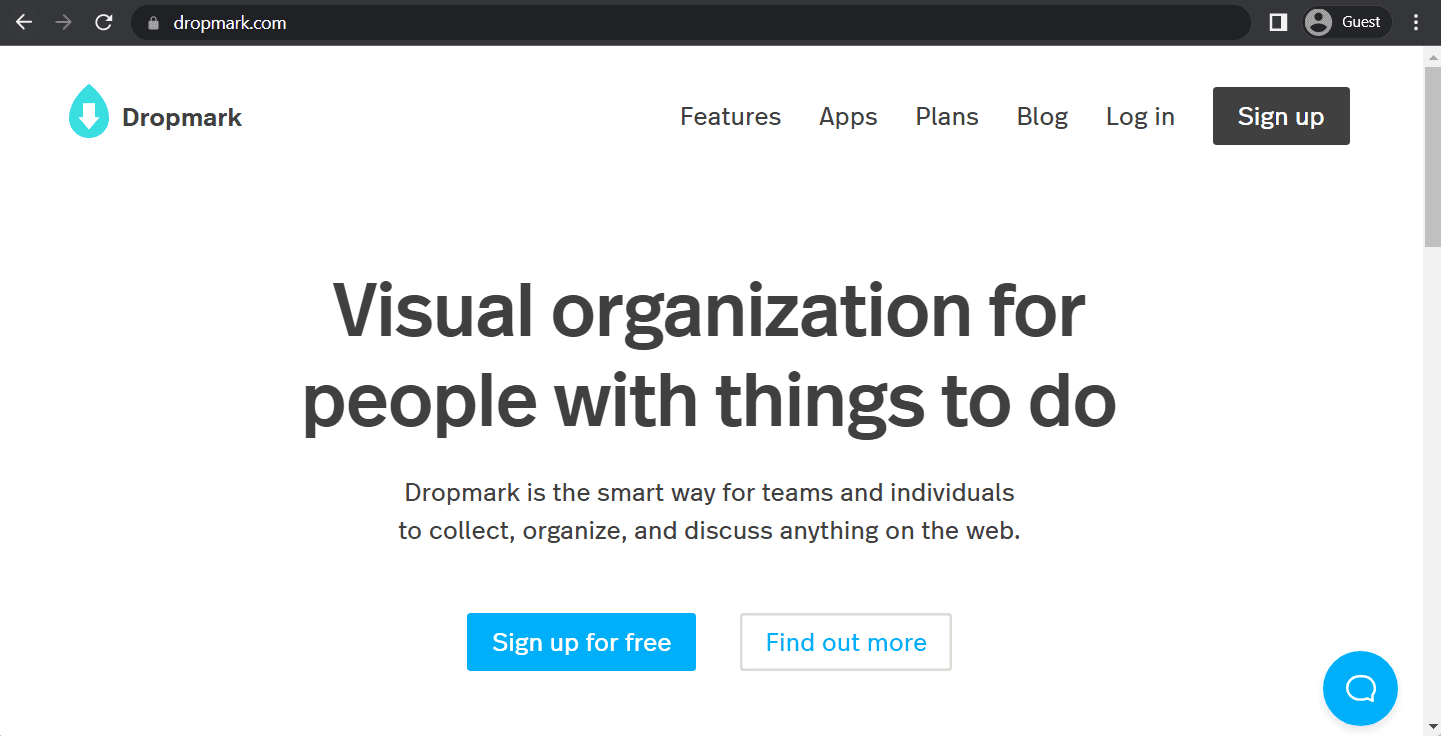
Dropmark is another example of a creative collaboration tool that acts as a centralized hub for all kinds of information about your projects. It is used around the world to create project designs, with a big focus on web design. It has many different features, including tagging, adding graphics, leaving comments, and many other means of collaborating within a team. It is a solution with collaboration being its main feature from the get-go.
Dropmark has a free version that is mostly treated as a free trial of sorts – since most of the collaborative features are locked out. What it can offer in this version is the ability to link various content types, the ability to import and export your data, search ability, API for integration, and so on. There are also three different paid versions of Dropmark – Solo, Team, and Enterprise.
The Solo subscription is a good choice for freelancers and other solo entrepreneurs, with $4/$5 per month if billed annually/monthly. It has item grouping, unlimited collections, specific image annotations, organization via tags, analytics, as well as the ability to add either clients or collaborators to a project. The Team subscription ($5 per month per user) includes every feature mentioned in Solo and free (Lite) versions, as well as centralized billing, Slack integration, user roles, and more. The Enterprise subscription does not have a designated public price to it, offering the ability to work with over 100 users at once, while also providing features such as custom hosting, priority support, custom branding, and SSO.
Filestage
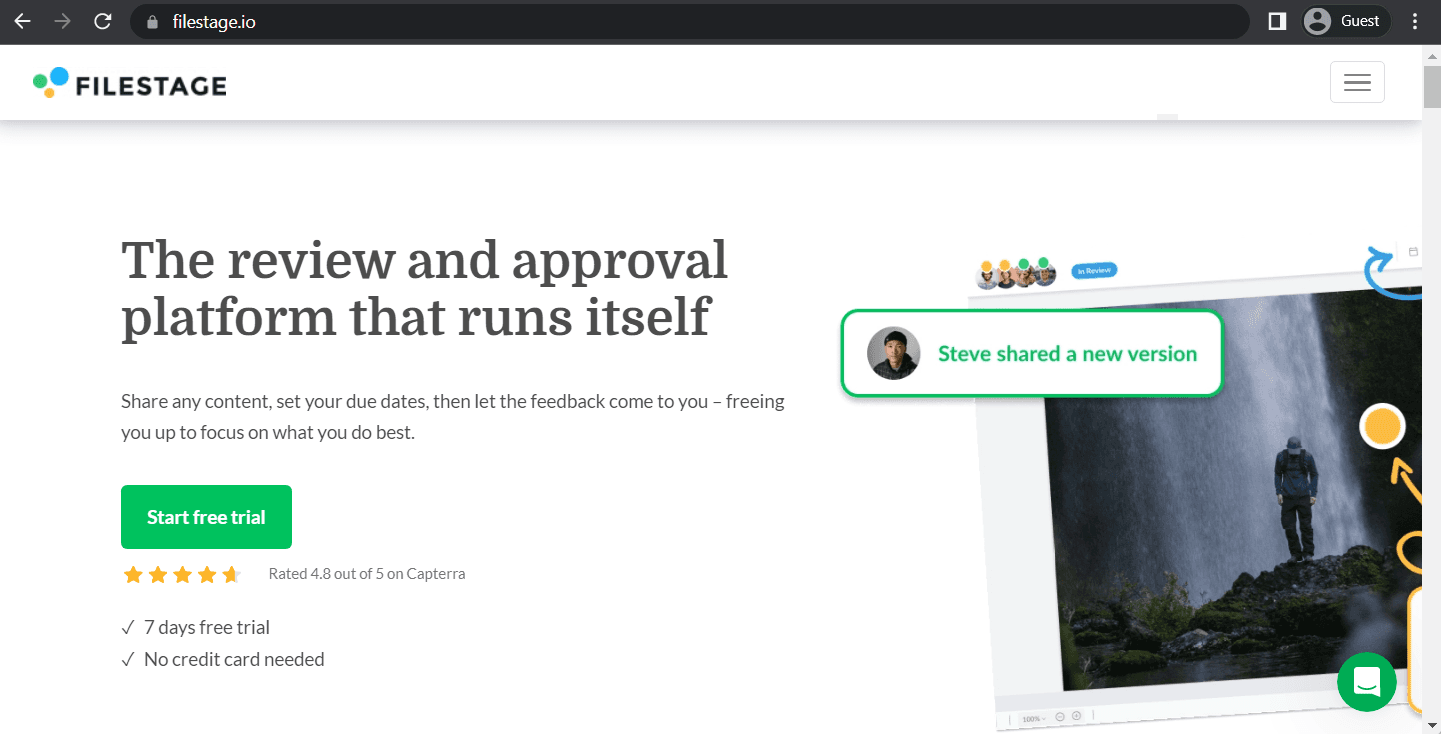
Filestage is another creative collaboration software that focuses on design review and feedback management. It has multiple ways to leave your feedback about a project, it is possible to invite multiple people to provide you with feedback, and so on. Comments can be turned into to-do lists for your team to follow, each comment can be enriched with an attachment or a visual annotation, and it is also possible to create review steps for each project stage for you to follow.
Filestage does not have a free version of its solution, but it does have a free trial of its services. There are three main types of paid subscriptions available – standard, professional, and enterprise. The Standard subscription costs $19 per month per person, offering no limits in terms of reviewer numbers, as well as files and versions. It also has one project template, three sections, two review steps, and 25 active projects. The Professional version is double the price of the Standard one, with all of the same features, as well as custom branding, advanced roles, priority support, review reports, and so on. The Enterprise version does not have a public pricing level, but it does have its own set of features – zero limits in terms of project templates, review steps, active projects, multiple teams, SSO, full file reports, advanced security options, etc.
Moqups

alt: moqups landing page
Moqups is a creative collaboration app that puts a lot of emphasis on simplicity when it comes to whiteboarding. It can be used to create mockups, diagrams, wireframes, and prototypes, and makes it extremely easy to do so. It is also a great collaboration tool that offers an easy way to brainstorm ideas, gather feedback and use all kinds of design-related features to create concepts and visualize ideas with no prior experience in design.
It has a fairly limited Free plan, with a limitation of 2 projects (400 objects), as the means of trying out the overall user interface of the solution. Other than that, there are three paid plans that Moqups can offer – Solo, Team, and Unlimited. The Solo plan ($13 per month, billed annually) is only suitable for a single person, offering zero limitation in terms of projects and objects, as well as exporting capabilities into PDF or PNG and the ability to invite guests in view-only mode. The Team plan (#23 per month, billed annually) can be used by up to 3 people while offering all of the previous features, combined with roles, permissions, real-time collaboration, and integrations with Confluence and Jira. The Unlimited plan ($67 per month, billed annually) does not have a user limitation whatsoever, while also having SSO, enhanced access controls, unlimited teams, etc.
Mural

Digital whiteboards have a rather special place within the industry of creative collaboration solutions due to how important they are to a successful collaboration as a whole. Mural is another example of such a solution, offering an incredibly versatile design tool that allows communication and collaboration from anywhere on the planet. Mural can be used to create to-do lists, sketches, sticky notes, tasks, design mockups, and more. Mural also has templates, anonymous voting, flexible permissions, a variety of third-party app integrations, etc.
Mural has a free edition, limited to 3 murals only and a rather basic set of features. There is also a Team+ subscription that costs $9.99 per user per month that offers an unlimited number of murals, in-app chat/email support, privacy control, and unlimited visitor access. The extension of a Team+ subscription would be a Business subscription that costs $17.99 per user per month with its own unique set of features, such as SSO, priority support, unlimited guests, and flexible payment options. Theoretically speaking, the Enterprise subscription should be the most expensive option on the list, even though it does not have a public price level. What it does have is a set of features such as centralized administration, API key management, SCIM provisioning, enhanced privacy, and more.
Marvel

A design collaboration tool with a rather noticeable name, Marvel is a great choice for creating mockups, assets, and many other types of projects. The solution itself is easy to use and intuitive, making it easy to work with for both people with some experience in the field, as well as people with zero design experience. Designs themselves can be built either directly using Marvel’s own design tool, or synchronize existing designs from Photoshop or Sketch.
It is also a great collaborative tool, with the ability to add people to the project, leave comments, gather and analyze feedback, and so on. You can use it to group people into teams, create shared folders, manage user permissions within each project, and more.
Marvel has a very limited free version of its solution – it works with one user and can hold only one project, serving as a decent preview of what Marvel is capable of. There are also Marvel Pro, Marvel Team, and Marvel Enterprise. Marvel Pro (#12 per month, billed annually) is pretty much an extended version of the free software, offering a lot of functionality to a single user – with unlimited projects, removed watermarks, and so on. Marvel Team is a great option for small-scale teams, it costs $42 per month when billed annually, and can also offer prototype downloads, 10 active user tests at once, and an overall limit of 3 users as a whole. Marvel Enterprise is a solution with no public pricing available, it offers no limitations for users, projects, and user tests, while also providing SSO, advanced security settings, prioritized support, etc.
Viewst

Viewst is a simple, scalable SaaS platform for automating creative versioning, streamlining approvals, and understanding creative performance. It consists of 4 layers including a simple and very flexible editor and animator, then a bunch of communication tools, like preview links, statuses, deadlines, the possibility to create teams and instantly collaborate on a project, AI-powered tools for scalability, creating ads versioning, resizing and localization as well as an analytics layer, that helps designers to get instant data about creative performance.
Viewst has three different pricing plans available, each with its own target audience. The Pro+ subscription is mainly for small businesses or solo users, costing $50 per month when billed annually. This subscription offers no limitations in terms of file export, including images and HTML files, as well as 5 brandbooks, 50 background removals, and 30 gif/video downloads.
The Business subscription is a good choice for marketing teams and larger businesses, starting from five users in a team, and costing $200 per user per month when billed once a year. It offers the ability to expand the number of users covered multiple times, while also having team access, unlimited brandbooks, as well as bigger limitations in terms of background removals and gif or video downloads when compared with the Pro+ version.
The Enterprise level subscription does not have a public price available, but it is a solution built specifically for large enterprises with very specific marketing goals. It offers task customization, while label integration, as well as everything mentioned in the previous subscription tiers.
Conclusion
Collaboration is an essential part of almost any project out there, especially when it comes to creative projects. There are many different tools that have been created with the sole purpose of making collaboration and cooperation between different people easier.
For example, solutions like FigJam, Invision, and Moqups are great for users that are looking for an online whiteboarding solution with collaborative capabilities. Alternatively, tools such as Viewst, Canva, or Figma are great for use cases when you’re looking for an online image editing solution built with collaboration in mind.
Victoria is the CEO at Viewst. She is a serial entrepreneur and startup founder. She worked in Investment Banking for 9 years as international funds sales, trader, and portfolio manager. Then she decided to switch to her own startup. In 2017 Victoria founded Profit Button (a new kind of rich media banners), the project has grown to 8 countries on 3 continents in 2 years. In 2021 she founded Viewst startup. The company now has clients from 43 countries, including the USA, Canada, England, France, Brazil, Kenya, Indonesia, etc.

